- HOME
- Introducing Solids
Introducing Solid Foods to Your Baby
Is it time for introducing solid foods to your baby?
So your newborn is growing well and around 4-5 months old now. You are most probably in a comfortable routine with him, and only have to worry about breastfeeding or formula feeding him. Suddenly, you realize it’s time for you to give him some ‘real’ food soon – introducing solid foods.
Do not despair! We have prepared this guide to enlighten you about various important aspects of solid foods for your baby, ranging from managing mealtimes, appropriate food items, safety, and matters associated with it.
When to Start Introducing Solid Foods?
As a rule of thumb, the American Academy of Pediatrics (AAP) suggests that children can start on solids between the ages of 4 - 6 months. However, the answer is a combination of this age bracket and the varying personal growth traits of each baby. Let us look at some of the pointers that can suggest that your baby is ready for solid foods:
- Baby can sit in an upright position and hold his head up.
- Baby comes across as curious and observant, particularly noticing you, when you are eating something.
- Her ‘tongue thrust reflex’ is gone - used to push the food out of his mouth automatically.
- He remains hungry even after being fed a full day's portion of milk (8-10 breastfeeding sessions or approximately 32 ounces of formula milk).
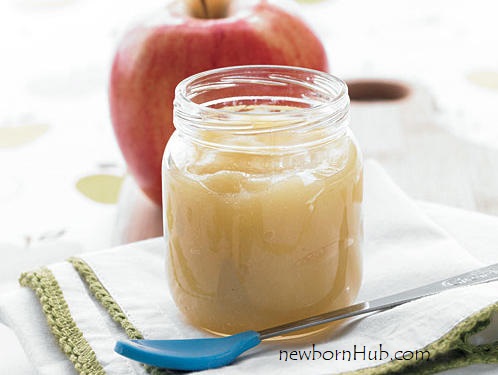
Regardless of the pointers above, never rush any milestone of your baby, just because you want to. The same holds for introducing solid foods. Don't, under any circumstance, start giving them solids before 4 months, and always consult your healthcare practitioner whenever in doubt.
How to Introduce A Baby to Solid Foods?
Introducing solid foods is the first step for your baby towards learning how to chew and swallow food. Solid foods need to work around milk intake of the baby, as that is a vitally important source of nutrition. Both forms of milk (breast or formula) are vital sources of vitamins, iron, and protein for your baby, and can be easily digested.
As per AAP recommendation, breastfeeding needs to be exclusive for the first 6 months, and thereafter, on a supplemental basis, until the baby turns one 1-year-old. Breastfeeding to be replaced with formula milk, where moms cannot or do not want to breastfeed.
Milk feeding can start the baby’s day as his first meal. It can then be given again, before or after meals, as well as before bedtime. Combining baby food with milk feeding will be a trial and error exercise in the beginning, and every baby will have their habits and eating patterns that you will have to get used to. For example, if you think your baby is a big drinker, then try feeding them first, followed by milk and quite the opposite, if they are a moderate drinker.
The general milk feeding recommendation for babies around 9 months is 20 - 28 ounces of formula milk daily or breast milk the baby every 3 - 4 hours. When they are in the range of 9-12 months, feed them around 16-24 ounces of formula milk daily or breast milk them every 4-5 hours.
Usually, your baby will get the hang of baby food and will be excited about having it when they reach the age bracket of 6-9 months. It is at this point that you will have to get her into a proper routine of three round meals - breakfast, lunch, and dinner (and 2-3 snacks in between, if they are willing). With time, she will eventually get used to the concept of eating on a schedule.
Never force your baby when she doesn’t want to eat. Just get her out of the baby chair or feeding position and let her move on (and so should you)!
At 4 - 6 months, you can feed her two portions, each two to four tablespoons. At 7 - 12 months, she can be given three meals, with each meal portion the size of baby's fist.
As your baby starts adjusting to eating solid meals, you need to bear in mind that they will have their days when they will be keener on peas and carrots than in drinking milk, or the other way round. This is part and parcel of your baby’s growth, so be ready to adjust and adapt, as they won’t.
Managing Meal Times
An important part of introducing solid foods to your baby is creating a routine for them. It is a true test for a mother as she will need to be calm and composed that, in turn, helps the baby to stay focused too. Your baby will be observing and learning how to eat when you wash his hands, make him sit down and pacify him when needed. Never put any loud music or distracting TV whilst you go about these learning steps. This process will help your baby’s learning process and help him to figure out when he is full of food.
Starting solid food and getting into a routine of eating it is a new milestone for your baby and is surely a time-consuming one. Your baby is getting comfortable with the multiple new sensations that the baby food is introducing to their palate. The usage and feeling of putting a spoon in their mouth and learning how to use it is a brand new task for them. They may pick it up instantly or give you a few days (or weeks) of tough time. It varies from baby to baby.
Weaning period can be messy. Be prepared for cleaning up the spattered or spat food from your baby. This doesn’t necessarily mean that they dislike the food. They are just trying to adjust or coordinate with this new ritual and routine, and of course, the new flavors that they are being introduced to.
Beware of allergies or intolerance. Any child can have any allergy that you may not know of as a mother. Introducing one food at a time and sticking to it for up to 5 days (before introducing another one), ensures that you can keep a track of the food they are not intolerant or allergic to. Always notice any rash, hives, wheezing cough or breathing, vomits, diarrhea, excess gas, or blood in stools. You know what you need to do when you notice any of that – call your pediatrician, and if it turns out to be serious (use your intuition and best judgment), then don’t be hesitant to take them to the emergency nearest you.
If you can, go for homemade baby food recipes so you know what goes into their meal exactly, in case they have an intolerance or allergy.
Knowing When Baby is Full
When introducing solids to your baby, their appetite may vary from one meal to the other. This isn’t very helpful in ascertaining whether she has had sufficient food to satisfy her hunger.
Look for signs and body language of your baby – if she is leaning back, seems uninterested in your efforts of feeding her, moving her head away from food or pushes the spoon away, or starts playing with it, chances are that she is full.
Conversely, if a baby leans forward, opens her mouth (baby bird type), or tries to reach the food or spoon, then she may be signaling for more food.
This is known as responsive eating and serves as a vital step in your baby’s nutrition generally and in furtherance of healthy independent eating habits.
There will be times when the baby is chewing her food with mouth closed (and taking her time) and you may feel that she doesn’t want to eat. Just wait and watch and let them swallow the food down. As much as you want, you cannot rush a baby’s meal.
Where To Feed The Baby
A lot of mothers start feeding their babies on their laps. Alternatively, you can purchase a high chair or a feeding chair to help your baby with the posture and routine.
Never give finger foods to a crawling baby as that might be a choking hazard and may also leave stains on your carpet or floor.
Eventually, introducing solid foods is all about interlinking the process of eating food with meal times and the basic mannerisms associated with using the dinner table and using spoon and bowl, etc. This ensures that you are inculcating good eating manners in your kid at a very early age, so he can enjoy his meals growing up with you, as part of the family.
Developing Healthy Eating Habits
Developing healthy eating habits and assessing the best food for newborn baby are key features of introducing solid foods. You can help your baby in this journey by following some simple cues.
Notice the signs and body language of your baby that point towards hunger or fullness.
- Always include a wide variety of foods that are nutritious and wholesome, and notice the ones that they enjoy the most.
- Avoid foods that have excess sugar, salt, fat content, or spice. Food should be of good temperature so they can taste the true flavors on their palate. A simple search on the internet will reveal to you, some of the best homemade baby food recipes. Cooking them food with these recipes will ensure they get a consistently healthy diet.
- Lastly, patience is key. You will need a lot of this virtue during your baby’s first year. Learning a new skill takes time, and in case of a child, even more so!
Baby Food Chart & Tips
Introducing solid foods has never been this easy! We have prepared a super easy to follow, informative, and printable food chart for babies that will provide step-by-step guidance, on recommended sources of foods, their examples, and portion sizes.
Also, don't forget to have a look at the super-helpful tips for introducing solids in babies.
FAQ:
Is it OK to start solids at 4 or 5 months?
American Academy of Pediatrics recommends introducing solid foods to children between the ages of 4 - 6 months.
When can babies drink water?
Once they reach the age of 6 months, you may start giving them some water. However, this can never substitute breast milk or formula.
When can my baby eat honey?
You shouldn’t be introducing honey to your baby until they reach the age of at least 12 months. It may have bacteria that can cause botulism, leading to constipation, weakened cry and dry sucking in babies.
When can my baby eat yogurt?
Yogurt (whole milk-based) can be introduced to babies when they are around 7-8 months of age and can be great first food for them when introducing solid foods. Always ensure that baby is not colic or allergic to milk or milk-based products.
When can my baby eat cheese?
Mothers can experiment with small amounts of cheese at about 6 months. Again, the caveat applies regarding milk allergies or colic babies.
Do I need to introduce solid foods to my baby in a certain order?
There is no particular order for introducing solid foods. As we mentioned earlier, one new single-ingredient food should be introduced at a given time to detect allergies and intolerance.
How and when can I introduce foods with more than one ingredient?
Your child can be introduced to foods with more than one ingredient whenever they are comfortable eating solid meals (usually when 4-6 months of age). Moreover, it is an absolute must to establish that your baby has tried a specific ingredient separately and he is not allergic or intolerant to it. These meals can include soup, cereal, and pasta.
When introducing solid foods to your baby for the first time, try offering them a single ingredient (e.g. meat, a vegetable, or fruit) in puree form. Then wait for 3-5 days before introducing a new food item. This helps in detecting any specific food allergies that your baby may have. Always maintain a list of food items he has tried safely (or not).
What baby food do you start with?
Pureed meats, poultry, beans, and iron-fortified cereals are recommended as the first foods for your baby.
How much solids should my baby eat?
Start with 1-2 teaspoons of food. Increase the portions to suit your baby’s appetite. Upon your baby reaching 12 months of age, he should be consuming roughly three small meals a day, in addition to the breast milk or infant formula.
What are organic baby foods?
Organic baby foods are grown or processed in a manner that does not involve synthetic fertilizers or pesticides, hence, limiting your baby’s exposure to these substances.
How to make your own baby food?
One of the best things you could do, as part of introducing solid foods to your baby, is to prepare it at home.
- Peel and pit (or strain) the fruits as required. Make its puree in a blender or food processor, adding water, breast milk, or formula milk, to get a good consistency that your baby will find easy to eat and swallow.
- Grains can be cooked or grinded and then refined into a puree. The consistency can be reduced with the above-mentioned liquid of choice, as required.
- Baby’s food should be seasoned with healthy herbs and mild spices and excess sugar, salt, and fat should be avoided at all times.
How do I introduce food to my baby? And what solids should I introduce first?
Nurse them before introducing solid foods. Establish their preference, i.e. a high chair or your lap. Only offer food when the baby is hungry and in the mood to eat. Offer small amounts at the start and refer to our baby food chart for portion sizes. If the baby doesn’t like a particular food at a given time, try offering it at a different time.
Pureed meats, poultry, beans, and iron-fortified cereals are good first food choices for your baby.
My baby doesn't like the texture of finger foods. Is that normal?
Just be patient! And yes, that is fine. It may be because they are not used to eating lumpy foods. Try experimenting with different types of textures, for example, well-mashed vegetables, and fruits or smooth purees.
Some examples of textured foods that can be easily gummed and digested include ripe bananas, cantaloupe melon, tender cooked carrots, and sweet potatoes, and cooked pasta of different shapes.
Always supervise your baby when they are eating to avoid the risk of choking.
My baby bruises easily. Could this be a sign of a vitamin deficiency?
The risk of developing vitamin K deficiency is high in infants until they are introduced to solids or regular foods - around 4-6 months after birth. One of the signs of this deficiency includes bruising as well, especially around the head or face area.
Conclusion
You may notice changes in color and odor of your baby’s stool when you are introducing solid foods to their diet. Do not worry about it, this is normal.
However, if the stools are firm and causing pain, then you should discuss this with your doctor, and try to substitute with some other types of fruits and vegetables. You should also increase fluid intakes of the baby, such as breast milk or formula or even a few sips of water.
Introducing solid foods to your baby is surely an important and exciting step in their growth. The key is perseverance, and to be aware of your baby’s personal choices and conditions so you can adapt and adjust accordingly.
These can be emotional and challenging times for the parents as well as the baby. Spend them making wise choices related to your baby’s health and nutrition. He will soon turn 1 and all this worry about introducing solid foods will be in the past and a life-long memory.
Return to Homepage.
Related topics:
Tips for Introducing Solid Foods
Baby Food Chart
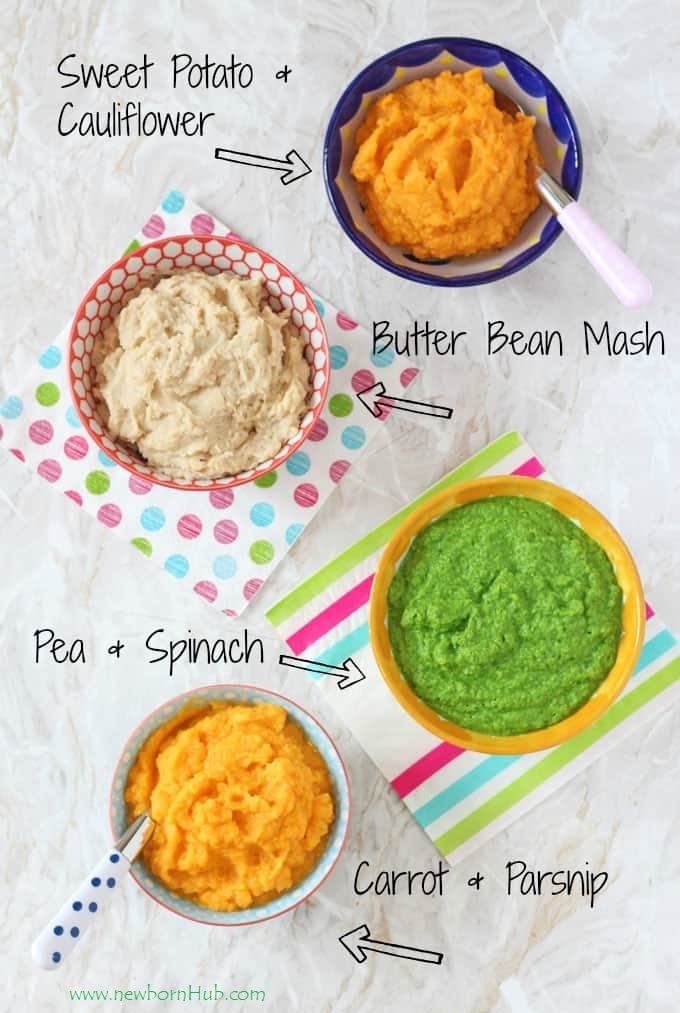
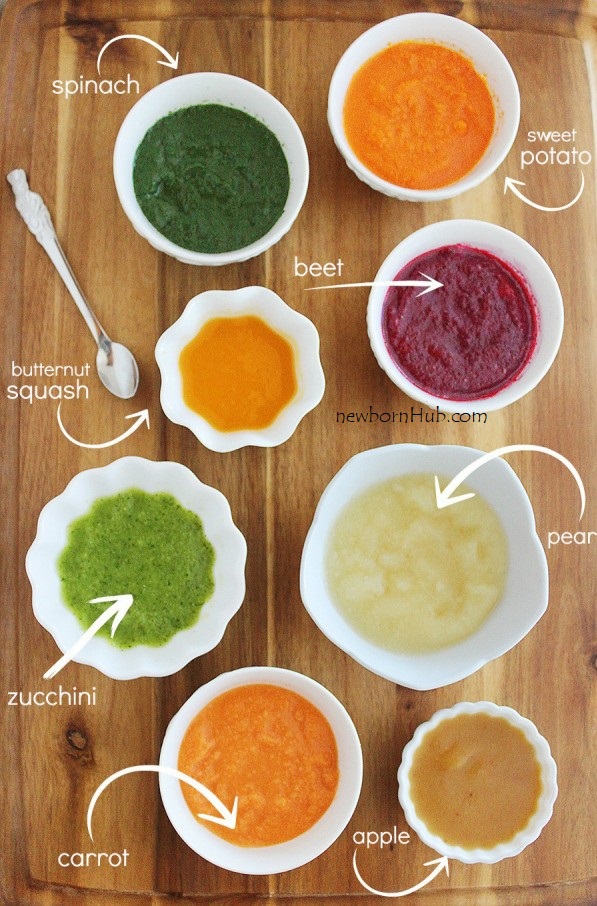
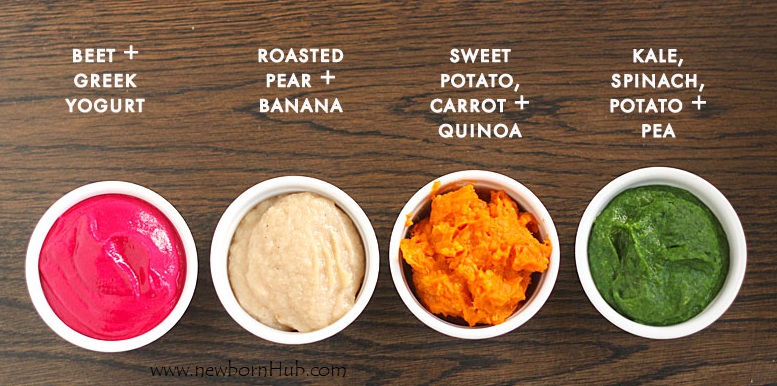
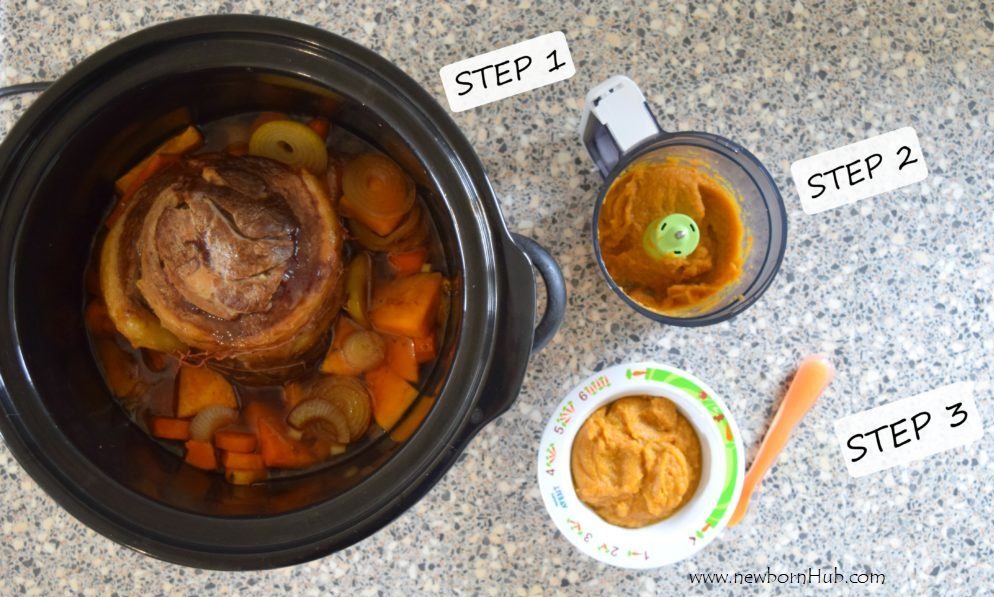



New! Comments
Have something to say about what you just read? Leave me a comment in the box below :)